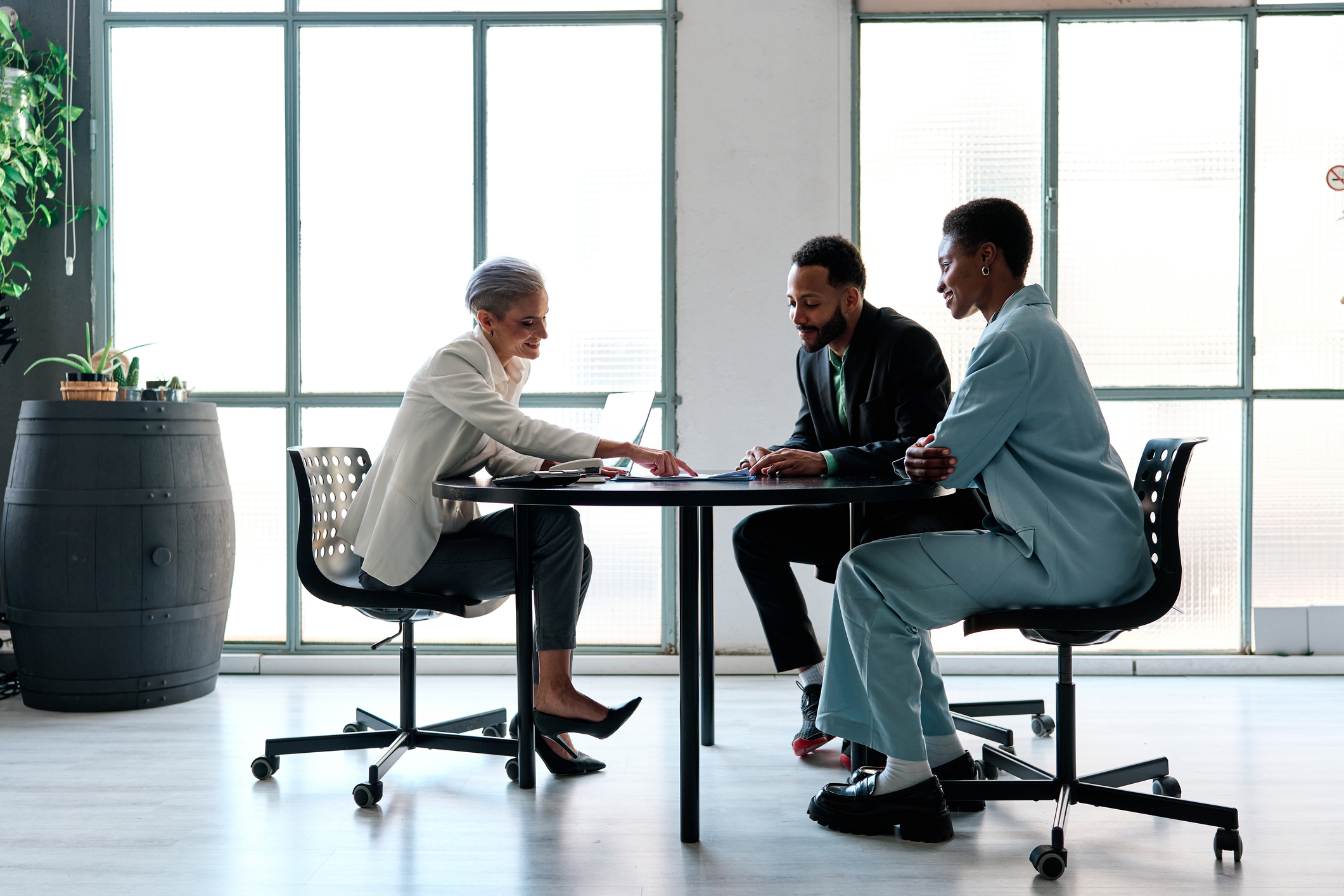You Can Pay $0 in Taxes on Your Retirement Income
When retirees add up all their deductions and personal exemptions, they may find opportunities to generate the income they need from their portfolios without triggering any federal taxes. Here's how.


During your working years, paying more taxes means you’re making more income, and that’s a good thing. But when you’re done working, paying taxes doesn’t stop. That is, unless you’ve got a savvy savings strategy and the necessary tax and investment knowledge to keep your money out of the tax man’s hands in retirement.
Here’s an example of how to generate $100,000 in retirement income without paying anything in federal taxes.
Where the Trouble Begins
Tax-deferred accounts, such as 401(k)s, 403(b)s and IRAs, are great for saving. Unfortunately, they can be terrible when it comes time to pull your savings out.

Sign up for Kiplinger’s Free E-Newsletters
Profit and prosper with the best of expert advice on investing, taxes, retirement, personal finance and more - straight to your e-mail.
Profit and prosper with the best of expert advice - straight to your e-mail.
Given current tax laws, any distributions you take are taxed at ordinary income rates (up to 39.6% in 2017 and 37% in 2018), and taxable required minimum distributions begin at age 70½, whether you need the money or not. And that’s just at the federal level. Depending on the state you live in, you may owe even more in state income taxes.
Here’s the scenario for someone who seeks to have $100,000 in yearly retirement income. Assuming you receive $30,000 from Social Security, in theory you would need to withdraw $70,000 from your IRA/401(k) to cover the shortfall. If you are married, over age 65, and claim the standard deduction in 2017, you would owe about $13,000 in income taxes on all of this income. (Note: While we’re using 2017 figures for our example, this tactic will work in the same fashion under the new tax law in 2018.)
That means to net $100,000 of spendable income, you would actually need to withdraw not just $83,000, but closer to $90,000 to cover that tax hit on your withdrawal, since the additional withdrawals to pay for taxes also create more taxable income. Depending on your state income taxes, you may need to withdraw even more!
A Better Way to Generate Retirement Cash Flow
Having taxable accounts, such as non-qualified, brokerage accounts, in the mix can pay off handsomely at withdrawal time. While these taxable investment accounts are subject to tax on interest, dividends and capital gains, they enjoy preferred tax rates on qualified dividends and long-term capital gains.
What does $100,000 in retirement cash flow look like in this situation when the advantages of taxable accounts are carefully utilized? Depending on how big the gains are on those investments, it’s possible to avoid taxes altogether.
This planning strategy comes to life by coordinating the favorable tax treatment on Social Security benefits, the possibility of a 0% federal long-term capital gains tax rate and the standard deductions and personal exemptions available to taxpayers.
This gets a little complicated, but given the potential payoff, it’s worth understanding. Between 0% and 85% of your Social Security benefits may be subject to tax. The exact amount is based on your provisional income, which includes earned income, pensions, retirement account distributions, rental income, taxable and tax-exempt interest, dividends, capital gains and 50% of your Social Security benefits.
The IRS taxes long-term capital gains (those held for at least a year) at 0%, 15% or 20%. The 0% rate applies to long-term capital gains as long as your 2017 taxable income doesn’t exceed $37,950/$75,900 if filing single/jointly.
Taxpayers are entitled to claim a standard deduction and personal exemptions, at least for 2017. In 2017, the standard deduction is $6,350/$12,700 when filing single/jointly. If you are over 65, an additional deduction of $1,550/$2,500 can be claimed. Finally, a personal exemption of $4,050 per eligible individual (subject to phase-outs) can be claimed. Together, these benefits can total $11,950/$23,300 when you file in 2017. (Note: With the recent changes to the tax law, the result is nearly the same for 2018, considering the higher standard deductions.)
Now, let’s assume you are married, over age 65, claim the standard deduction, receive $30,000 from Social Security and own stock in a taxable investment account.
In this case, an additional $70,000 of cash flow is needed beyond your Social Security to achieve the $100,000 spending target. If $70,000 of stock is sold with a realized gain of $49,000 or less (cost basis of at least $21,000), then due to the provisional tax calculations for Social Security, only $23,000 of the $30,000 in Social Security received would be subject to tax. The good news? The $23,300 of standard deduction and personal exemptions offsets the taxable Social Security benefits, and the capital gain realized qualified for the 0% capital gains tax rate, leaving you with a $0 federal tax bill. State taxes may generate some tax (if applicable), but the larger federal hit is avoided.
The Bottom Line
While this outcome is certainly exciting, it needs to be made within the context of all of your assets and your long-term financial plan. If you have 401(k) accounts, IRAs or lesser cash-flow needs, it’s likely that periodically performing Roth conversions may be a better strategy in the long run. Ask your financial adviser the following questions:
- Do I have an optimal mix of accounts when it comes to tax treatments? Would executing Roth conversions help the tax efficiency of my long-term financial plan?
- How should I decide from which accounts to withdraw money on a year-to-year basis?
Regardless of how your circumstances change, opportunities exist to reduce the amount of taxes you pay. But you have to take advantage of those opportunities. Planning is the key to lowering your tax bill today, tomorrow and throughout your retirement.
This information is not intended to be a substitute for specific individualized tax advice. We suggest that you discuss your specific tax issues with a qualified tax adviser.
Traditional IRA account owners should consider the tax ramifications, age and income restrictions in regards to executing a conversion from a traditional IRA to a Roth IRA. The converted amount is generally subject to income taxation.
Get Kiplinger Today newsletter — free
Profit and prosper with the best of Kiplinger's advice on investing, taxes, retirement, personal finance and much more. Delivered daily. Enter your email in the box and click Sign Me Up.

Brian Vnak is Vice President, Wealth Enhancement Group, advising clients on income, gift, trust and estate tax issues.
-
 Tax Day 2025: Don’t Miss These Freebies, Food Deals and Discounts
Tax Day 2025: Don’t Miss These Freebies, Food Deals and DiscountsTax Day You can score some sweet deals on April 15 in some select restaurants like Burger King, Shake Shack, and more.
By Gabriella Cruz-Martínez
-
 Registered Social Security Analyst: The Retirement Professional You Didn’t Know You Needed
Registered Social Security Analyst: The Retirement Professional You Didn’t Know You NeededThe services of a Registered Social Security Analyst (RSSA) are often overlooked. Yet, for those planning for retirement, nearing or already retired, an RSSA can be an invaluable resource.
By Donna LeValley
-
 Tax Day 2025: Don’t Miss These Freebies, Food Deals and Discounts
Tax Day 2025: Don’t Miss These Freebies, Food Deals and DiscountsTax Day You can score some sweet deals on April 15 in some select restaurants like Burger King, Shake Shack, and more.
By Gabriella Cruz-Martínez
-
 Should You Hire a Public Adjuster for Your Insurance Claim?
Should You Hire a Public Adjuster for Your Insurance Claim?As natural disasters strike more often, insurance clients are asking, 'What should I do, or who should I hire, if my insurance company is jerking me around?'
By H. Dennis Beaver, Esq.
-
 Tips to Help Entrepreneurs Create Self-Sustaining Businesses
Tips to Help Entrepreneurs Create Self-Sustaining BusinessesWith the right processes and people in place, a truly sustainable business can be efficiently passed on to a successor and run profitably on its own.
By Jason L Smith, CEP®, BPC
-
 Navigating Annuity Taxation: A Guide for Financial Advisers
Navigating Annuity Taxation: A Guide for Financial AdvisersUnderstanding the essentials of taxation in retirement income strategies involving annuities helps ensure positive outcomes for clients.
By Jake Klima
-
 How Google Reviews Can Help (or Hurt) Financial Advisers
How Google Reviews Can Help (or Hurt) Financial AdvisersDon't leave your Google Business Profile unclaimed — someone else can make changes if they claim it. Also, here's what you can (and cannot) do with the reviews.
By Jeff Briskin
-
 Tax Time: Does Your Kid Influencer Owe Taxes?
Tax Time: Does Your Kid Influencer Owe Taxes?State Tax Some minors are making big money on social media. Here’s how to know if they need to file taxes.
By Gabriella Cruz-Martínez
-
 How Baby Boomers and Gen Xers Are Redefining Retirement Living
How Baby Boomers and Gen Xers Are Redefining Retirement LivingBoth generations need to embrace change and leverage real estate as a dynamic asset in their retirement planning. Here's how financial advisers can help, too.
By David Conti, CPRC
-
 How Good Advisers Manage Risk in Challenging Markets
How Good Advisers Manage Risk in Challenging MarketsThey understand the difference between what might be real challenges to an investor's strategy and fear brought on by market volatility.
By Ryan L. Kirk, CFA®